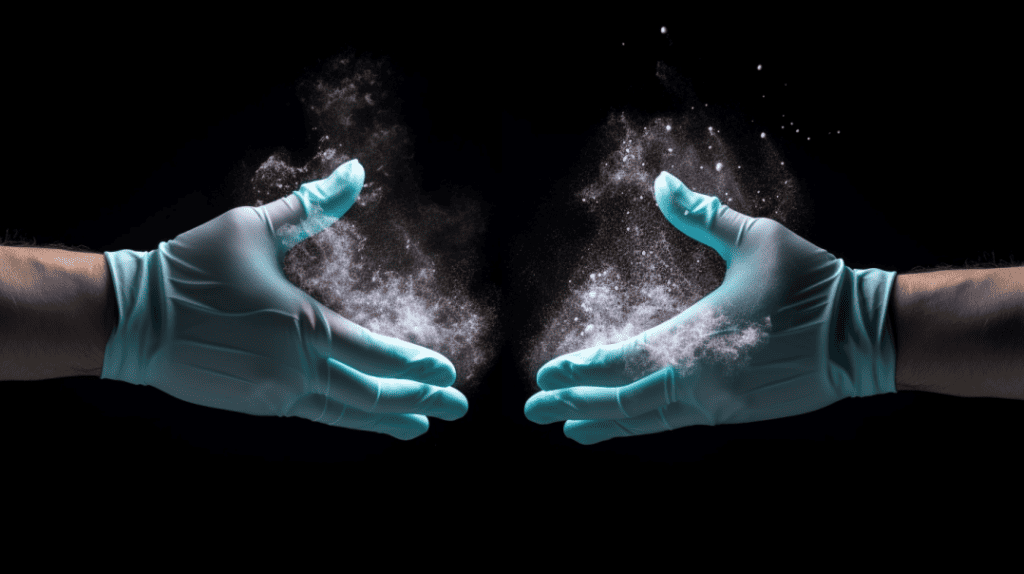Do you ever wonder if there is a difference between cleaning and disinfecting? You’re not alone! Many people use these terms interchangeably, but they actually have distinct meanings. Understanding the difference between the two is important for maintaining a hygienic environment.
Cleaning involves removing visible dirt, debris, and grime from surfaces using soap or detergent and water. It’s important because it helps to reduce the amount of bacteria on surfaces and makes them look more appealing. However, cleaning alone does not necessarily eliminate harmful microorganisms that can cause illness. That’s where disinfecting comes in – it’s an essential step in creating a clean and healthy space. In this article, we’ll explore what disinfecting entails, why it’s important, and best practices for achieving a clean and disinfected environment. So let’s get started!
Key Takeaways
- Cleaning involves removing visible dirt and grime from surfaces using soap and water, while disinfecting involves killing harmful microorganisms that cleaning may not remove.
- Regular cleaning helps to reduce the amount of bacteria on surfaces, but disinfecting is essential in creating a clean and healthy space.
- Proper disinfection entails using an EPA-approved disinfectant that’s effective against bacteria and viruses, and enough time should be allowed for the disinfectant to work according to its instructions.
- Harmful microorganisms can cause a range of health risks, from minor infections to life-threatening illnesses, and maintaining a clean and disinfected environment is crucial for preventing their spread.
Cleaning: What it Entails and Why it’s Important
Cleaning is a crucial step in maintaining a healthy environment, but do you know what it really entails? Cleaning involves the removal of dirt, grime, and other debris from surfaces using water and cleaning agents. It’s important to clean surfaces regularly because dirt and debris can accumulate over time, leading to the growth of harmful bacteria.
Regular cleaning has many benefits. Not only does it help prevent the spread of germs and illnesses, but it also helps maintain the appearance of your home or workspace. Clean surfaces are less likely to harbor allergens that can trigger allergies or asthma symptoms. Additionally, regular cleaning can improve indoor air quality by removing dust and other pollutants.
To get the most out of your cleaning efforts, it’s important to clean surfaces thoroughly and regularly. This means paying attention to high-touch areas such as door handles, light switches, and countertops. Regularly disinfecting these areas can help prevent the spread of germs and keep you healthy. By making cleaning a regular part of your routine, you’ll be able to enjoy all the benefits that come with a clean living space!
The Importance of Disinfecting for a Hygienic Environment
To maintain a hygienic habitat, you must regularly disinfect surfaces to deter harmful germs from growing and spreading. Cleaning can remove visible dirt, debris, and dust, but it doesn’t kill all bacteria or viruses that linger on surfaces. Disinfecting is necessary to eliminate those microorganisms that can cause infections.
The role of disinfecting in preventing infections cannot be overstated. Inadequate disinfecting can lead to the spread of illnesses such as the flu and COVID-19. Disinfection is particularly crucial in high-traffic areas like hospitals, schools, and public transportation where people are more likely to come into contact with germs.
So what does proper disinfection entail? Here are three key steps:
- Use an EPA-approved disinfectant that’s effective against bacteria and viruses.
- Apply the solution generously to all surfaces that people touch frequently such as doorknobs, light switches, and countertops.
- Allow enough time for the disinfectant to work according to its instructions; this could range from a few seconds up to several minutes depending on the product used.
Remember: keeping your environment clean is essential for maintaining good health. Make sure you’re doing your part by properly disinfecting your space and encouraging others around you to do the same. The impact of inadequate disinfecting on public health affects us all!
Harmful Microorganisms: Why They Must be Eliminated
You may not realize it, but harmful microorganisms are lurking all around you and must be eliminated to keep you and those around you healthy. These tiny organisms can cause a range of health risks, from minor infections to life-threatening illnesses. They thrive in warm, moist environments and can be found on surfaces such as door handles, kitchen counters, and even your phone.
To prevent the spread of harmful microorganisms, it is essential to take prevention measures such as regular cleaning and disinfecting. Cleaning refers to the removal of dirt or debris from a surface using soap and water or other cleaning agents. Disinfecting goes one step further by killing any remaining bacteria or viruses on the surface using chemicals like bleach or hydrogen peroxide.
The importance of eliminating harmful microorganisms cannot be overstated. Not only does it help prevent the spread of disease, but it also creates a clean and hygienic environment for everyone. Regularly cleaning and disinfecting high-touch surfaces in your home or workplace can go a long way in keeping you and those around you healthy.
Chemicals and Agents Used for Disinfecting
Chemicals and agents used for disinfecting play a crucial role in eliminating harmful microorganisms and keeping surfaces clean and safe. However, not all disinfectants are created equal. There are different types of disinfectants available in the market, each with varying levels of effectiveness against specific types of microorganisms.
One type of disinfectant is quaternary ammonium compounds (QUATs). These chemicals are commonly found in household cleaners and can effectively kill bacteria, fungi, and viruses. However, they may not be as effective against certain strains of bacteria like E.coli or Salmonella. Another type of disinfectant is hydrogen peroxide-based solutions which are more effective at killing spores than QUATs but require longer exposure times.
The most potent type of disinfectant is bleach. It can effectively eliminate almost all types of harmful microorganisms including viruses, fungi, and bacteria within minutes of contact. However, it should be used with caution as it can damage surfaces and cause skin irritation when not handled properly. It’s important to choose the right type of disinfectant based on the surface being cleaned and the organisms you want to eliminate to ensure maximum effectiveness while minimizing potential harm to people or objects around you.
Best Practices for Maintaining a Clean and Disinfected Environment
Maintaining a clean and disinfected environment is crucial for preventing the spread of harmful microorganisms, so it’s important to regularly clean high-touch surfaces like doorknobs, light switches, and countertops using effective disinfectants. The frequency of cleaning and disinfecting depends on the level of foot traffic in the area. For example, areas with high foot traffic should be cleaned and disinfected at least once every hour.
Proper cleaning and disinfecting techniques are also crucial for maintaining a safe environment. When cleaning surfaces, use soap or detergent with water to remove dirt and grime before applying a disinfectant solution. Be sure to follow instructions on the label carefully, including diluting solutions as necessary and allowing sufficient contact time for optimal effectiveness.
Another key aspect of proper cleaning is ensuring that all equipment used is properly maintained. This includes changing mop heads regularly (at least once per day) and ensuring that vacuum cleaners have filters installed correctly to prevent dust from being released back into the air while cleaning. By following these best practices for maintaining a clean and disinfected environment, you can help ensure that your space remains safe for everyone who uses it.
By keeping your environment clean and disinfected, you are not only creating a pleasant space but also preventing harmful microorganisms from spreading. Did you know that according to the Centers for Disease Control and Prevention (CDC), approximately one in every 31 hospital patients has at least one healthcare-associated infection? This means that maintaining a clean and disinfected environment is crucial not only in hospitals but also in our homes and workplaces.
Remember, cleaning involves removing visible dirt and debris, while disinfecting eliminates harmful microorganisms that cannot be seen with the naked eye. It’s important to use appropriate chemicals and agents when disinfecting to ensure effectiveness. By following best practices, such as washing hands regularly, using gloves when necessary, and properly storing cleaning supplies, you can maintain a hygienic environment for yourself and those around you. So go ahead, grab your cleaning supplies, put on some music or an audiobook, and get ready to create a safe haven for yourself!

